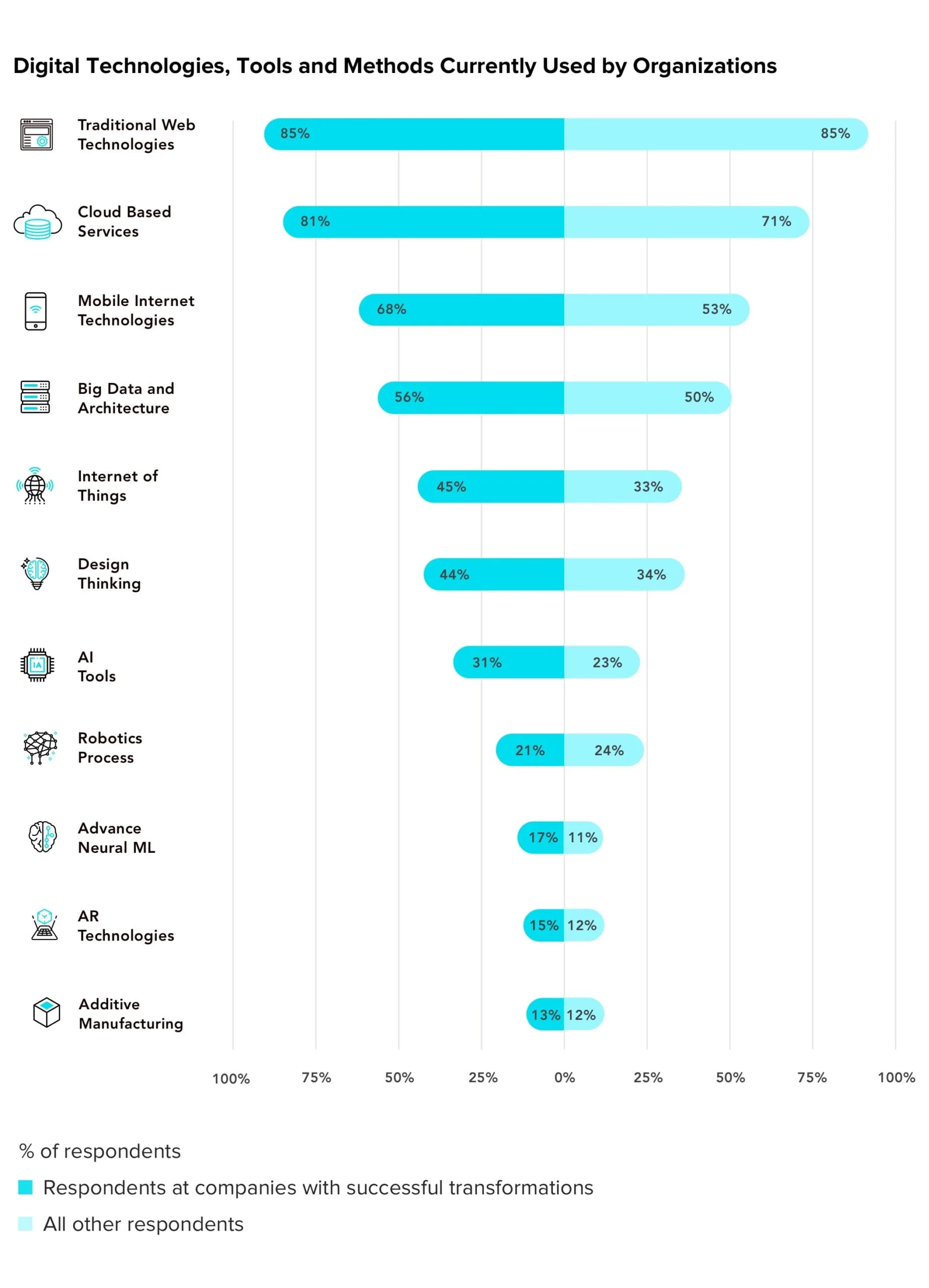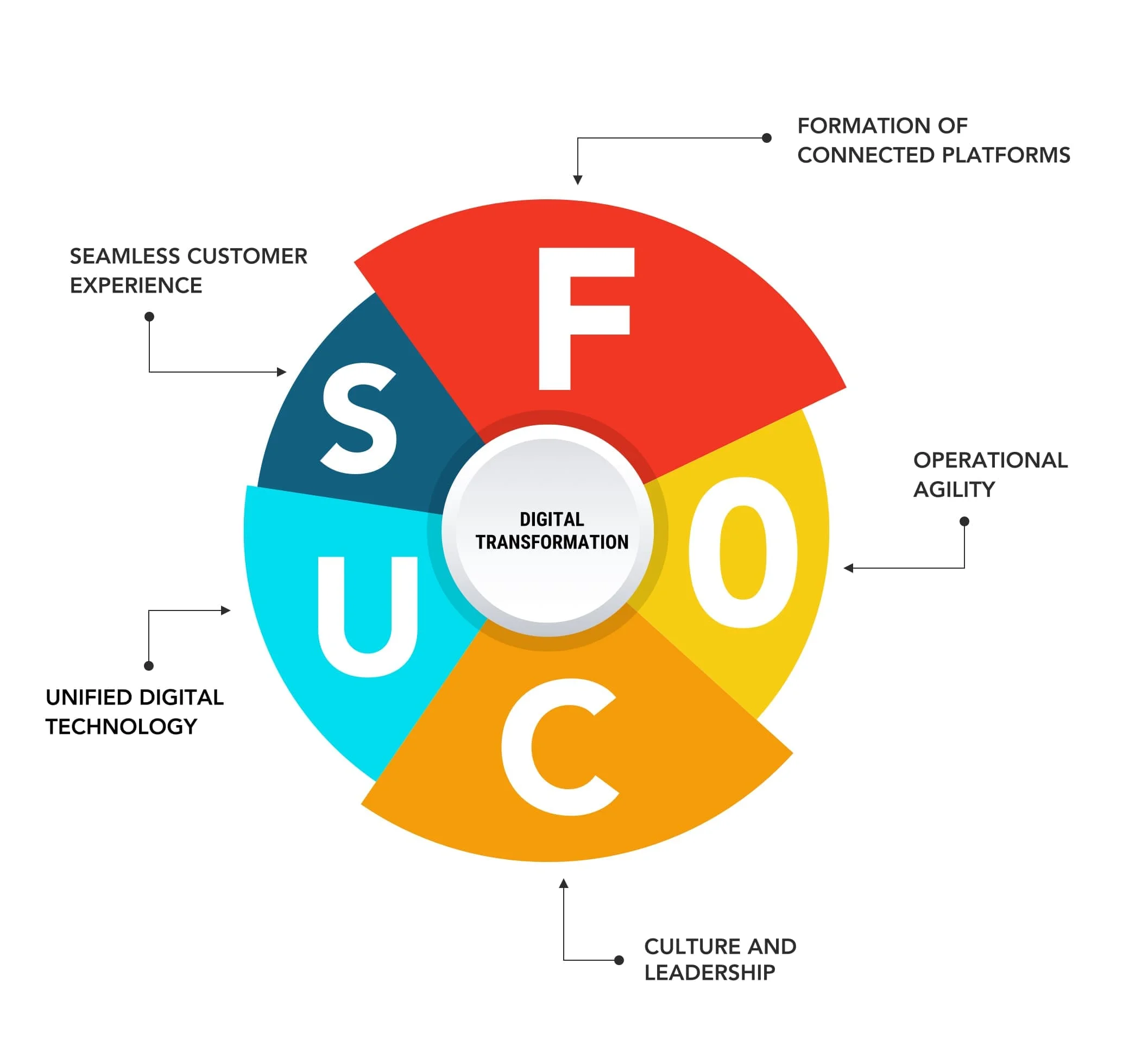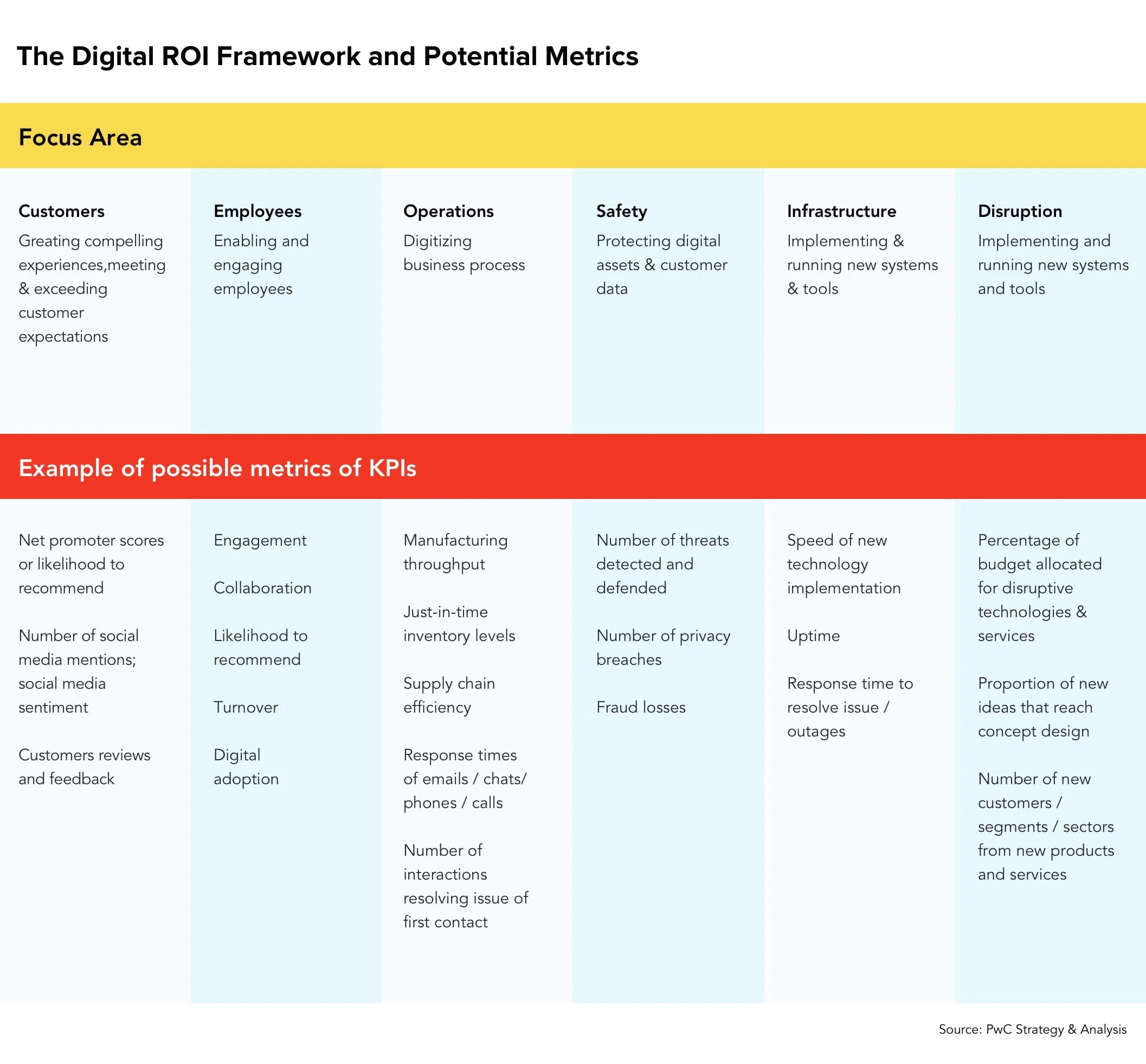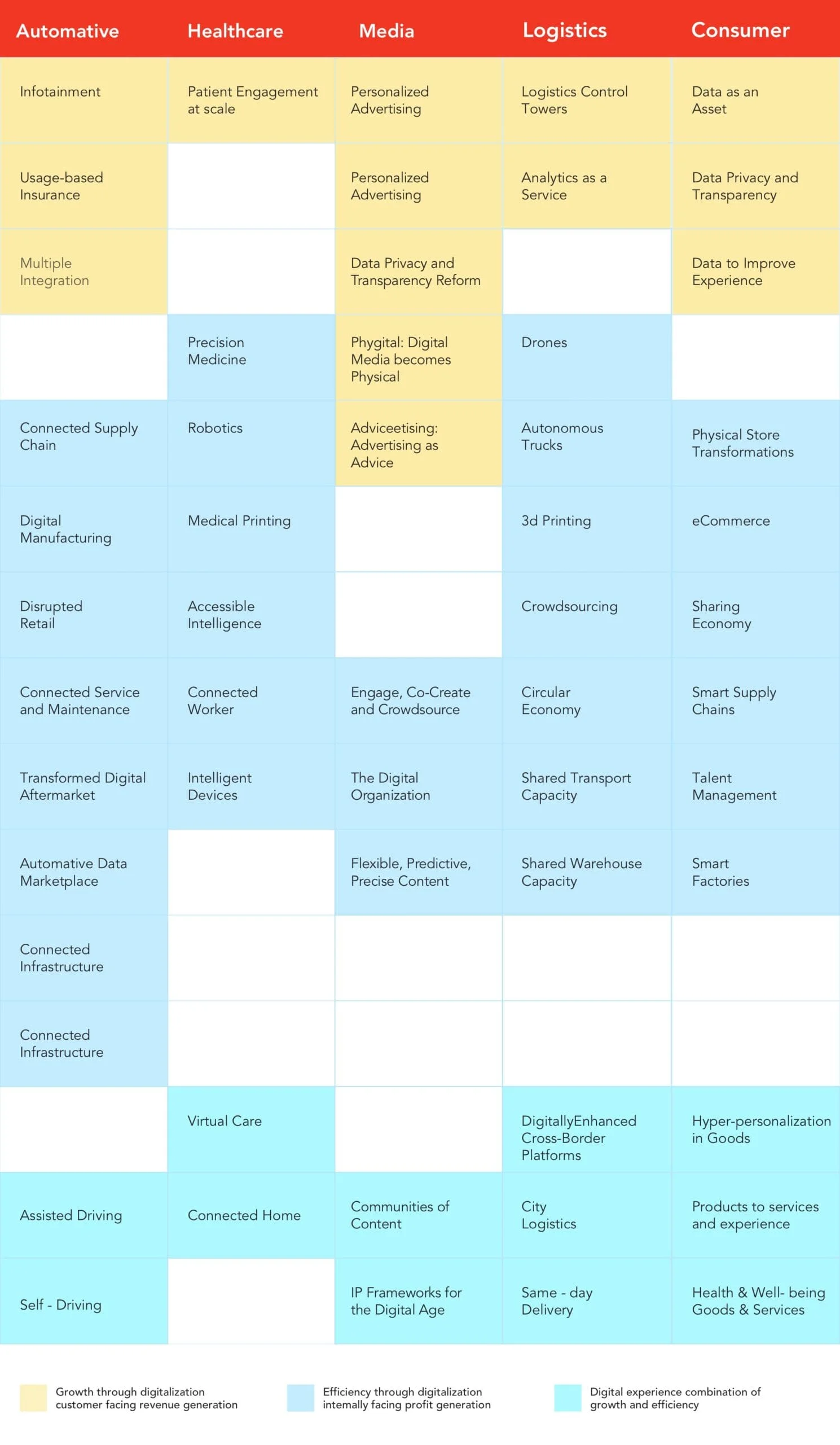Digital transformation and a focus on customer experience can generate a 20-30% increase in customer satisfaction and economic gains of 20-50%.
The customer experience is no longer the next competitive battleground. The paradigm shifts away from the “traditional consumer- business relationship” and toward fulfilling digital experiences with the products and businesses that customers choose. This has resulted in profound implications for how companies will organize to deliver and excel in serving seamless customer experience.
Businesses that strive to be customer-centric must pass through a process of a digital transformation to meet this consumer’s varying demands.
With nearly 78% of companies undergoing a digital transformation, it should come as no surprise that today, businesses are trying to leverage the power of digital transformation to shape themselves, to shape customers, and then to shape customer’s expectations.
However, even though almost every company seems to be going through digital transformation, 84% of digital transformation efforts fail.
Big names like GE, Ford, and P&G are some notable failed digital transformation examples. These companies poured about $1.3 trillion into digital transformation initiatives, 70% of which was wasted on failed programs. One of the reasons: they didn’t truly understand the concept of “digital transformation.”
A study says that 69% of people are either neutral or don’t feel confident when they are asked to explain the digital transformation to someone.

Digital Transformation Definition:
In today’s experience era, embarking upon a CX-led digital transformation journey is no longer a luxury, but a necessity for survival. However, to achieve this, you have to transform all areas of your business — culture, technology, and processes — by integrating them with the fuel of digital technology. What is Digital Transformation?
Digital transformation is the process of integrating and leveraging emerging and digital technologies across all areas of a business to meet the dynamic business and market needs.
A successful digital transformation demands a shift of focus to the edge of the enterprise and more agile data centers to support that edge. For building agile business through digital transformation, it is also required to rethink the usage of people, technology, and processes to fundamentally change the business model, driven in pursuit to deliver a seamless customer experience around products and services.

Why Does Digital Transformation Matter?
Before the ubiquity of the internet, Daniel Bell, the late Harvard sociologist, predicted in his seminal work — The Coming of Post-Industrial Society — that came true after four decades: the advent of the Information Age. Today, the IT industry is worth $2 trillion, much as Bell foretold.
Bell’s dynamic is accelerating today in the 21st century with the bombardment of various emerging technologies, including IoT, AI, big data, and elastic cloud computing. It is changing the landscape of digital commerce, customer engagement, and marketing in such a way that it impacts every area of your business.
Just go through the S&P 500.
In the year 1958, the average span of U.S. corporations to remain on the index was 61 years, which reduced to 18 years by the year 2011. And at present, businesses are getting replaced every two weeks on the S&P index. In other words, there are countless digital transformation examples emerging all the time.
No doubt, technology has played a vital role in driving this shift — it’s the core element in our digital transformation definition. However, companies that want to succeed must understand how to merge technology with a robust digital transformation strategy to reap the following benefits:
- Increased efficiency
- Improved customer experience
- Increased profits
- Increased agility and innovation
- Improved digital competition
When digital transformation is done right, it’s like a caterpillar turning into a butterfly.

George Westerman (MIT principal research scientist)
F.O.C.U.S. — The Digital Transformation Framework
In reality, the digital transformation strategy of every organization will vary based on their specific demands and challenges, thereby paving the way for a customized digital transformation framework. However, there are a few constituents that remain common in the digital transformation framework that every business leader should consider as they embark on the digital transformation journey.

- Formation of Connected Platforms
“Platform” is defined as a services-based framework, which is used to build an interoperable set of services that can be amalgamated to fabricate applications to achieve business goals.
A robust platform approach in the digital transformation journey allows your business to leverage a structured, scalable, and flexible foundation, which can eventually help speed up development time.
- Operational Agility
Agile Transformation is at the heart of “Digital,” and scaling is essential for any successful digital transformation in large enterprises. Even a study reveals that 68% of companies identified “building agile business through digital transformation” as one of their most important initiatives of digital transformation.
- Culture and Leadership
Companies today can uncover novel and important sources of data. What’s important is ensuring that you have the culture, talent, and organizational vision needed to turn that data into insights. Digital business transformation is hard-pressed to happen in the absence of leadership commitment; there are numerous failed digital transformation examples that bear out this fact.
- Unified Digital Technology
An ideal digital transformation strategy aims for using technology in the right way, in a secure manner. For instance, enterprises should leverage the support of the cloud to set up robust digital transformation frameworks.
Research indicates that CEOs see cloud computing as the second-biggest technology trend (after the Internet of Things) that will significantly impact their business in the coming years.
- Seamless Customer Experience
Why do you plan to undergo a digital transformation? If you fail to answer “to deliver a good CX,” then you’ve never fully understood the answer to the crucial question of “what is digital transformation?” Remember, customers are the most important stakeholders of any organization, and serving them in the best possible way is the sole aim of digital transformation.
95% of respondents in the Couchbase Survey said that the ultimate aim of digital transformation efforts should be to give customers and end-users a truly unique experience.
This digital transformation framework will accommodate any organization that is planning and preparing for change. The first checkbox to tick before embarking upon a digital transformation journey is to accept that your business requires a transformation and then must be willing to accept the fact that data will give guidance, however, leadership must take decisions.
The “5 Ds” Driving the Digital Transformation
In this era of Digital Darwinism, the success of your organizations’ digital transformation strategy cannot just rely upon deploying more technologies. Several other vital drivers that enable the successful completion of the digital transformation process are:
- Digital-Savvy Leaders
Digital transformation needs to be adopted across the enterprise, not just in a few teams that are trying to improve their domains. And it requires full support from leadership. According to the Harvard Business Review, digital transformations that don’t have strong leadership from the top tend to be ad hoc and chaotic.
When Angela Ahrendts took over as CEO of Burberry, she launched a bold ‘Art of the Trench’ campaign and an aggressive move towards digital transformation, which signaled her high level of ambition and rejuvenated the organization.
- Digital Security
Data security is a concern for most visionaries as cybersecurity is complex, dynamic, and fast-changing. The latest reports from industry research experts like Forrester and Gartner are pointing towards the same concerns.
Thus, successful digital transformation requires a transformation of security as well, which is a top-most challenge faced by several organizations when embarked upon a digital transformation journey.
55% of companies said that security was the number-one challenge they face when implementing digital enablement technologies.
- Data Silos: Unlocked
Today, organizations are sitting on mountains of unrefined data, oblivious about how to store, process, and utilize that valuable resource. Data and analytics are two vital components that drive digital business.It is vital to break the traditional data pipelines and introduce a process-oriented data methodology that focuses on collaborative data management practice.
Data is the new oil… It’s valuable, but if unrefined, it cannot really be used.

Clive Humby
(MIT principal research scientist) - Digital Culture
Siloed mindsets and a poor customer focus have long bedeviled organizations. In today’s digital era, finding a solution to these cultural problems is no longer an option, rather a necessity.
A digital culture encourages and enables employees to look outward and engage with customers and partners to develop new solutions. McKinsey Digital research reveals that “Organizational Culture” is one of the biggest impediments to successful digital transformation projects.
Organizations in which the senior management team communicates openly about digital transformation progress and success are 8 times more likely to be successful.
- Digital Twins
Digital twins refer to the digital replica of a real-world entity or system. The technology that was initially limited to the manufacturing world has entered the digital world. It is now getting merged with technologies like the Internet of Things, Artificial Intelligence, and Data Analytics, thereby emerging as one of the top digital transformation trends.
Using digital twins, organizations can have a complete digital footprint of their products throughout the product development life cycle — right from the design phase to the deployment phase.
The global digital twin market size is projected to reach USD 48.2 billion by 2026.
The ROI of Digital Transformation
69% of transformation leaders scored the ability to “justify the value of digital transformation” through ROI as challenging or very challenging. Measuring the return on digital transformation investments is a tricky business.
When an organization undergoes a digital transformation, it goes far beyond the functional and business boundaries towards how an organization goes to market, the way it operates, and the way it interacts with customers.
Thus, while determining the performance of your organizations’ digital transformation strategy, it’s essential to take a portfolio view and not a project level view and come up with a digital ROI framework that will help you gauge your organization more precisely.
Remember, organizations with successful digital transformation initiatives see a return on investment (ROI) over the next year.

Digital Transformation Across Various Industries
The role of digital technology in today’s era of experience is rapidly drifting away from being a driver of marginal efficiency. It is shifting towards being an enabler of fundamental innovation and disruption. Business leaders across all sectors are grappling with the strategic implications of these transformations for their organizations, industry ecosystems, and society.
- Automotive
Connected vehicles, digitized ecosystems, and autonomous vehicles help to build massive value in the automotive sector. According to a study by GE Digital, by 2022, automotive manufacturers expect that 24% of their plants will be smart factories.
The automotive industry has understood that meeting the consumer demands for a digitally improved experience is vital when the customers are researching, purchasing, and operating a car.
- Healthcare
The digital transformation in the healthcare industry is driven by the aging population challenge, increasing costs, increasing chronic diseases, and changed expectations of customers.
The four digital transformation trends — smart care, care anywhere, empowered care, and intelligent healthcare enterprise — will play a vital role in the healthcare industry.
79% of the healthcare consumers quote ‘search for doctors ratings and reviews’ as the topmost reason they prefer digital.
- Media
The dynamic audience of today’s world demands customized and personalized content, excellent viewing recommendations, and online tools to recreate “office water-cooler” conversations. However, media purveyors are unable to meet these ever-changing demands of consumers.
Coming up with the right content and its presentation in the correct context requires innovation and digital transformation. Intelligent advertising operations and insightful content production can help to build an enormous value in the media and entertainment industry.
- Logistics
A study says that to build a robust global digital platform in the logistics sector, $1.5T is at stake. The importance of these platforms will increase in time to come because it will open the doors for the small companies to compete with the established giants.
In this industry rife with existing inefficiencies, digital transformation could be the savior. Crowdsourcing is expected to have the most significant impact on the logistics industry.
- Customer Analytics
With the consumer controlling this entire game, consumer industries are being forced to rethink their digital value proposition. This industry is dealing with a flood of forces simultaneously.
From an aging population to Millennials entering the workforce, the Internet of Things to online consumer communities, regulatory reforms to consumers’ increased focus on responsible environmental practices, consumer companies are under the microscope.

Parting Words
Digital technology, despite its seeming ubiquity, has only begun to penetrate most industries. As it continues its advancement, the implications for revenues, profits, and opportunities will be dramatic and profuse.
Organizations with a good digital transformation strategy on the table can grow faster. However, digital transformation is a complex process and considering its complexity, organizations need to create a substantial ecosystem to drive change seamlessly.
Being digital provides organizations with an opportunity to boost customer experience. However, it requires cross-functional leadership — CMO, CTO, CIO, and CXO — to get it right. In a nutshell, digital transformation is about blending technology around a shared vision with no room for silo mentalities anymore.




